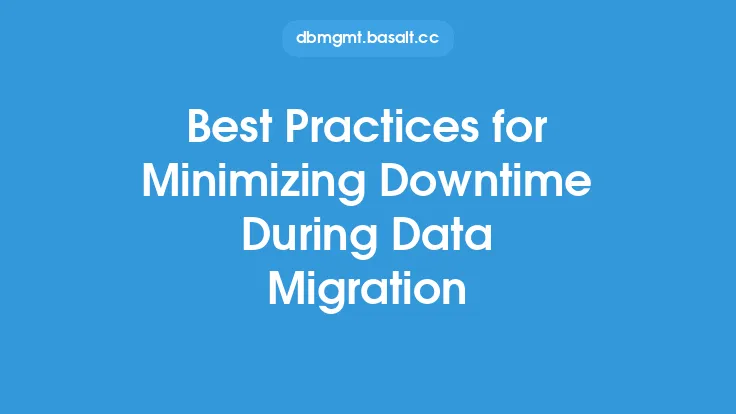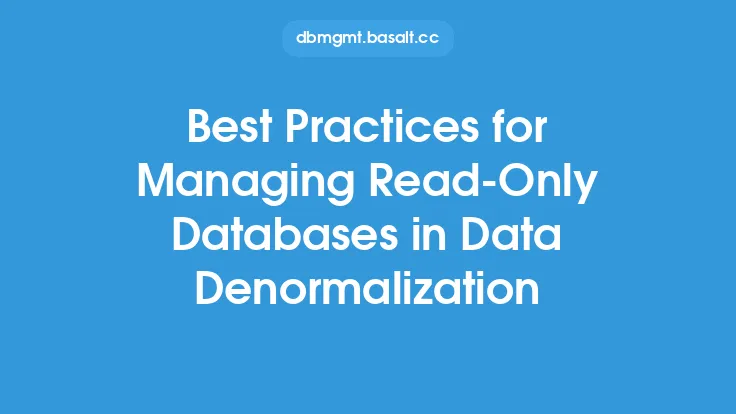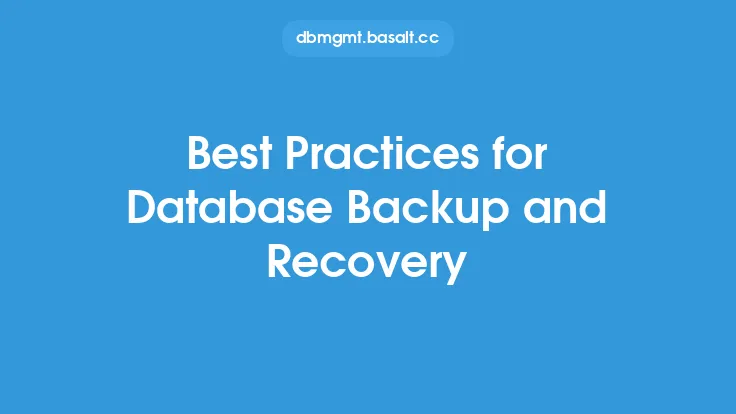Minimizing lock contention is crucial for achieving optimal performance in database systems. Lock contention occurs when multiple transactions or sessions compete for access to the same resources, such as tables, rows, or indexes, resulting in delays, timeouts, or even deadlocks. To minimize lock contention, it is essential to understand the underlying locking mechanisms and implement best practices that reduce the likelihood of conflicts.
Understanding Lock Contention
Lock contention arises from the fundamental principle of locking, which is used to ensure data consistency and integrity in a multi-user environment. When a transaction acquires a lock on a resource, other transactions or sessions are prevented from accessing that resource until the lock is released. The duration for which a lock is held can significantly impact the performance of a database system. Lock contention can be categorized into two types: intra-transaction contention and inter-transaction contention. Intra-transaction contention occurs when a single transaction holds multiple locks, while inter-transaction contention occurs when multiple transactions compete for the same lock.
Identifying Lock Contention
To minimize lock contention, it is crucial to identify the sources of contention in a database system. This can be achieved through monitoring and analyzing lock wait events, which provide valuable insights into the types of locks being contested, the frequency of contention, and the transactions or sessions involved. Database management systems (DBMS) provide various tools and utilities to monitor lock contention, such as lock wait statistics, transaction logs, and system views. By analyzing these metrics, database administrators can pinpoint the root causes of lock contention and develop targeted strategies to mitigate them.
Optimizing Database Design
A well-designed database can significantly reduce lock contention. One of the primary design considerations is to minimize the number of rows locked by a transaction. This can be achieved by using efficient indexing strategies, which enable the database to quickly locate and access specific rows, reducing the need for table-level locks. Additionally, partitioning large tables can help to reduce lock contention by allowing multiple transactions to access different partitions concurrently. Normalizing database tables can also help to reduce lock contention by minimizing data redundancy and improving data locality.
Implementing Efficient Transaction Management
Efficient transaction management is critical to minimizing lock contention. Transactions should be designed to be as short as possible, releasing locks as soon as the required operations are completed. This can be achieved by using commit and rollback statements judiciously, ensuring that transactions are properly isolated, and avoiding the use of long-running transactions. Furthermore, transactions should be designed to access resources in a consistent order, reducing the likelihood of deadlocks. By implementing efficient transaction management strategies, database administrators can reduce the duration for which locks are held, minimizing the likelihood of contention.
Leveraging Lock Granularity
Lock granularity refers to the level of specificity at which locks are applied. Coarse-grained locks, such as table-level locks, can result in significant contention, while fine-grained locks, such as row-level locks, can reduce contention. However, fine-grained locks can also increase the overhead of lock management. To balance these trade-offs, database administrators can use a combination of coarse-grained and fine-grained locks, depending on the specific requirements of the application. For example, using table-level locks for bulk operations and row-level locks for selective updates can help to minimize contention while maintaining optimal performance.
Utilizing Concurrency Control Mechanisms
Concurrency control mechanisms, such as optimistic and pessimistic locking, can help to minimize lock contention. Optimistic locking assumes that multiple transactions can access the same resource without conflict, while pessimistic locking assumes that conflicts will occur and acquires locks accordingly. By choosing the appropriate concurrency control mechanism, database administrators can reduce the likelihood of contention and improve overall system performance. Additionally, using mechanisms such as snapshot isolation can help to reduce contention by allowing transactions to access a consistent view of the data without acquiring locks.
Monitoring and Analyzing Performance
Monitoring and analyzing performance metrics is essential to identifying and addressing lock contention issues. Database administrators should regularly monitor lock wait events, transaction throughput, and system resource utilization to detect potential contention issues. By analyzing these metrics, database administrators can identify the root causes of contention and develop targeted strategies to mitigate them. Additionally, using performance monitoring tools can help to identify opportunities for optimization, such as indexing, partitioning, or reconfiguring system resources.
Best Practices for Minimizing Lock Contention
To minimize lock contention, database administrators should follow best practices such as:
- Optimizing database design to minimize the number of rows locked by a transaction
- Implementing efficient transaction management strategies to reduce the duration for which locks are held
- Leveraging lock granularity to balance the trade-offs between coarse-grained and fine-grained locks
- Utilizing concurrency control mechanisms to reduce the likelihood of contention
- Monitoring and analyzing performance metrics to detect potential contention issues
- Regularly reviewing and optimizing database configuration, indexing, and partitioning to ensure optimal performance
By following these best practices, database administrators can minimize lock contention, improve system performance, and ensure optimal data consistency and integrity.





